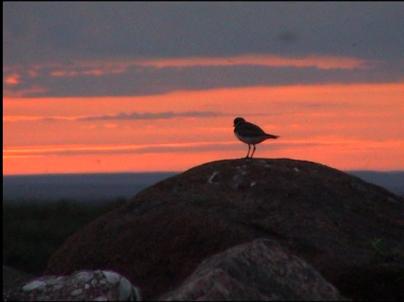July 17 – day 9 – Hornby Point
The tragic story of John Hornby, Harold Adlard and Edgar Christian is well documented in Christian’s diary. All three perished in the spring of 1927 after a long winter of starvation having either missed the caribou migration or perhaps, in some fickle finger of fate, the caribou did not swing by that year. I asked myself why I wanted to see the cabin and grounds where they died…. was just to satisfy a morbid curiosity? and see this part of the river’s contemporary human history.
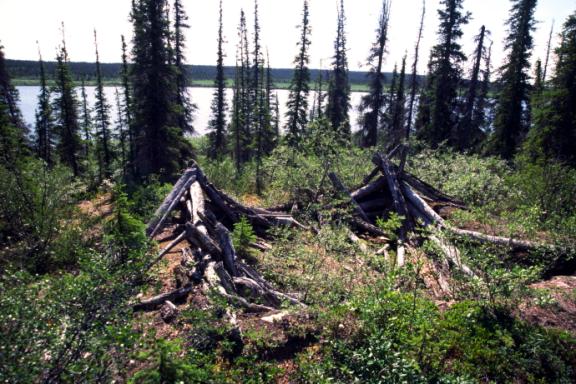
The day promises to be another scorcher – at 10am, its already 30C. The slight wind is muffled by thick forest. I feel like I’m suffocating under the bug jacket. On the 10km paddle to Hornby Point only sign of life is alone musk ox, browsing calmly, before he backs away from the river, into the willows.
It’s a bit of a hunt for the cabin which is not visible from the river. Using the sketch in Pelly’s book as a guide, we beach the canoes about 1km upstream from Hornby Point and start wandering through the woods. It’s Alfred who finds the cabin first…we follow his voice and come across some cut tree stumps, perhaps used to make the cabin. Well, its hardly a cabin anymore, more so log walls rotting back into the forest floor.
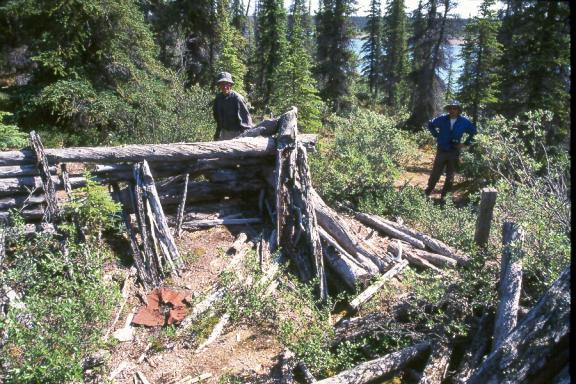
Its eerily quiet. Definite bad vibrations surround this place…maybe I’m just getting over heated. What happened here that was not written in any journal? The brush around the cabin site is dense. Ghosts linger despite the sunny day.
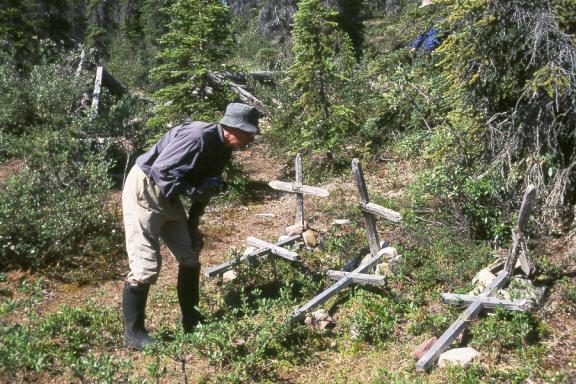
Inspecting the grave site. Someone left new crosses as the old ones lean and tilt and weather away. Ironically, we eat lunch by the canoes just paces from where these men starved. After all these years, unfinished business hangs and I’m glad to move on.
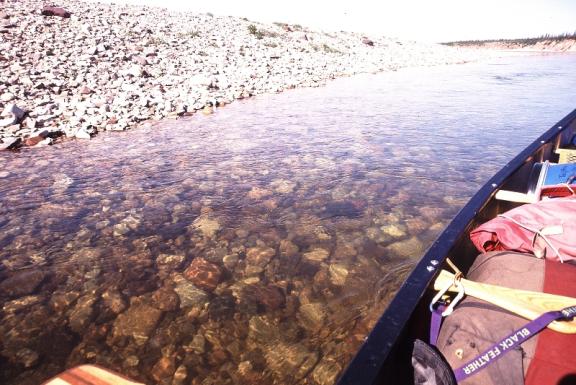
The river bends at Hornby Point. Within 2 km, a sand island pops up in the middle of the river. Swinging the canoe along the south channel, we pass high red rock cliffs. The water is so clear, each rock distinct. I lunge my paddle down like a spear and it bobs back up without touching bottom..
Suddenly more sand islands – we try to pick the main current. Resting in a back eddy, we startle two tundra swans. They swim furiously downstream then stretch wings, pump legs, working hard to become airborne. We watch as they circling back upstream, us under their flight path.
More swifts draw our attention back to navigation as the river splits to run around a large island: which side has more water? We guess left and paddle without incident over the sand shallows.
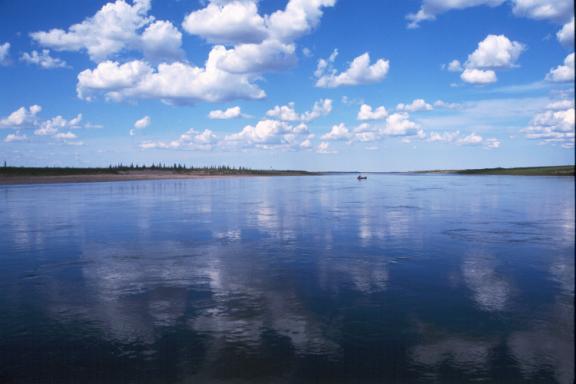
The Thelon slows and widens in the flattening land. Tiny creeks dribble clear water across sandy banks. It is a hot calm afternoon. Horseflies add to our bug misery, biting unprotected ankles. Spruce trees thin and become stunted, compared to the giants only a few kilometers upstream. What a bird haven: besides the swans, there are terns, gulls, yellow legs, loons, mergansers, unidentified ducks. Unidentified song birds call out from shore. A bald eagle perches on top of a spindly spruce, its weight bending the tree in half.
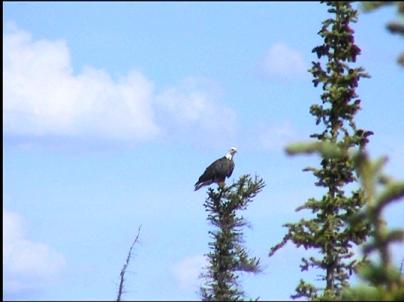
We luck out with a perfect campsite, this one easily accessible. No shade however and its 33C with no breeze. Inside the tundra tunnel, the window screens are open, pic coils lit, the last of the red wine consumed. Bull flies, black flies and mosquitos seem impervious to the heat, much to our chagrin. The pic smokes uselessly. Exploring from camp has zero appeal. I sit like a lump, stupefied by the heat and smoke, inertia has me planted.
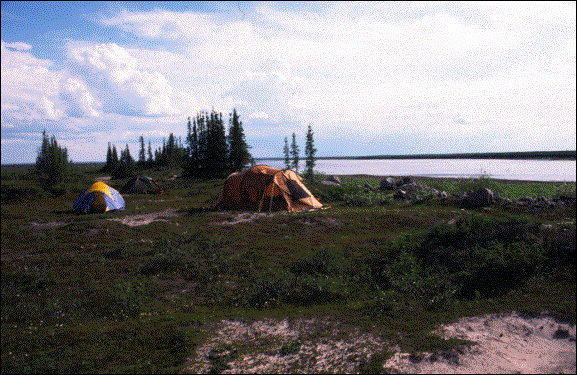
Happily in the early evening, clouds start to develop and provide some welcome shade and ensuing heat relief. By 9pm, a thunderstorm brews, finally cooling rain pelts the side of the tent. A plover, silhouetted by pink clouds and setting sun, stands silently on a bald boulder, waiting for night to fall.
